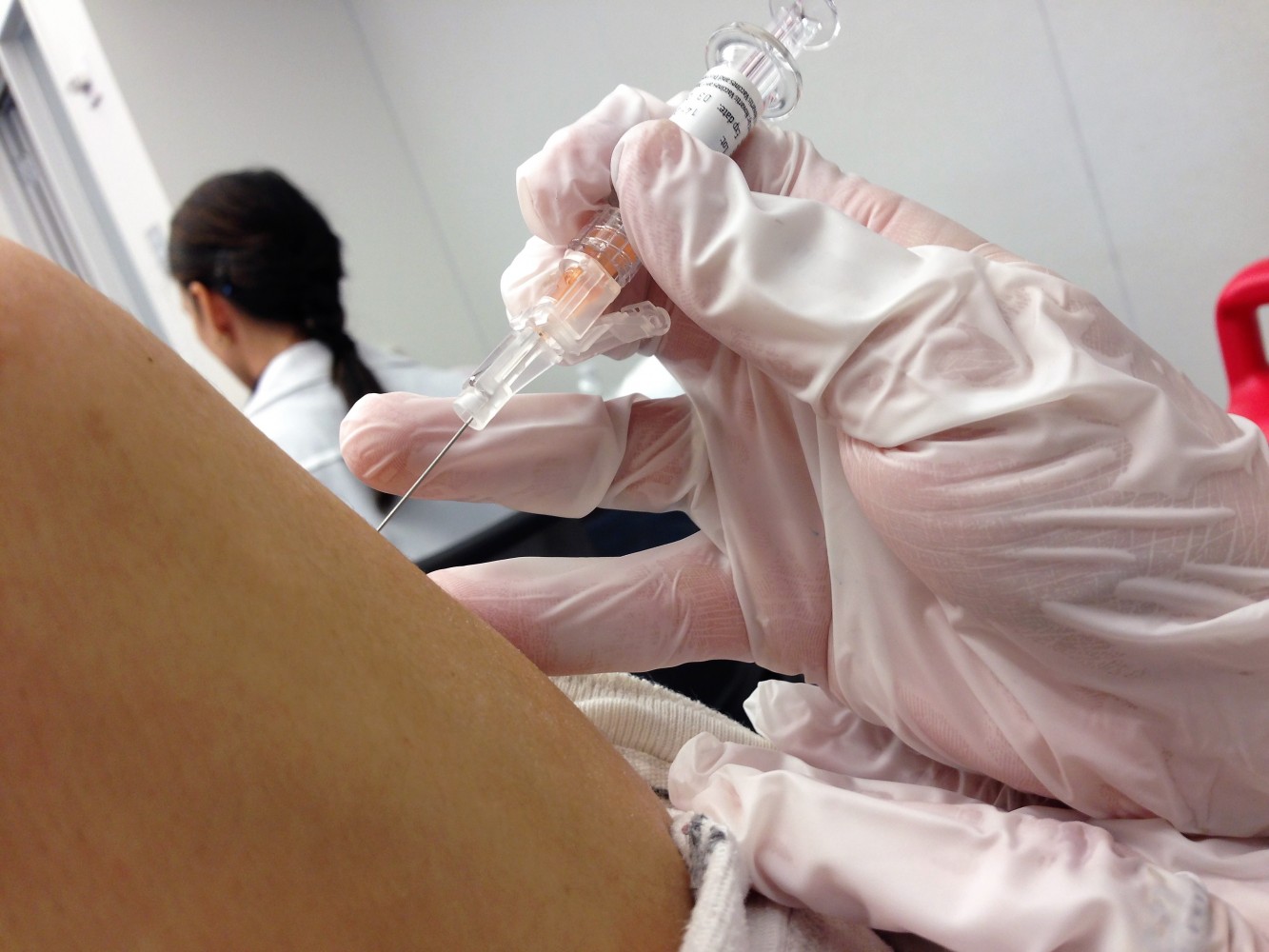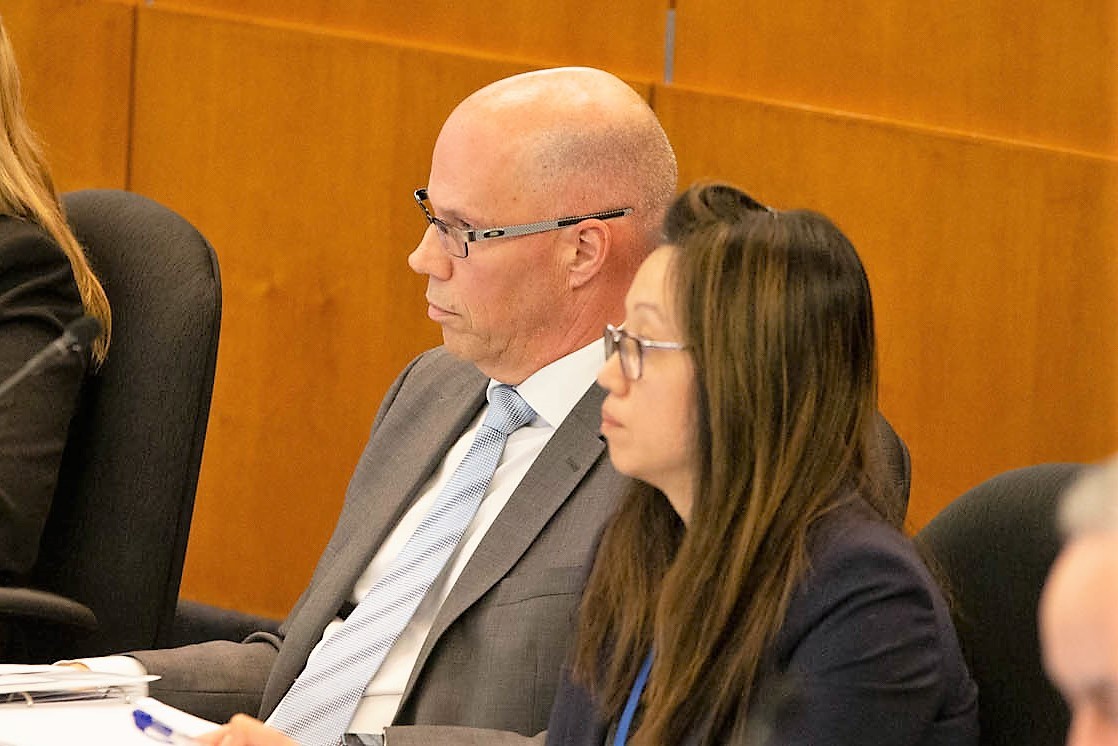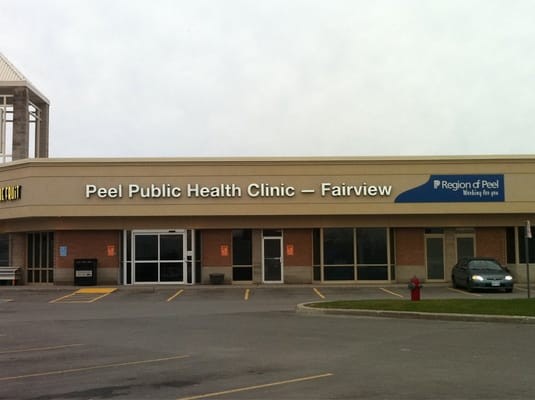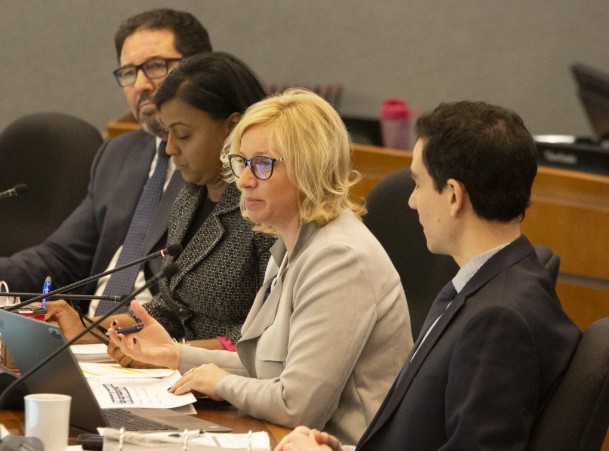
Peel Region leaders struggling with impacts of provincial healthcare changes
Peel Region councillors and staff, concerned over looming cuts to healthcare and human services, found out at Thursday’s meeting how the landscape could be reshaped under the provincial Progressive Conservative government.
“Overall, based on the information currently available, Peel will receive about $20 million less funding from the province for 2019. This amount will grow as public health cost share models continue to change in 2021,” Peel CFO Stephen VanOfwegan said in a presentation on the possible financial implications for the region.

Peel CFO Stephen VanOfwegan
According to his report, one of the biggest uncertainties hangs over public health funding, which covers programs for vaccinations (including flu clinics), opioid-related intervention, sexual health, disease prevention, certain types of health screening services, restaurant inspections, water testing and certain types of testing for environmental contaminants.
Currently, public health programs that get 75 percent of their funding from the province will only get 60 percent from Queen’s Park by 2021. And, according to VanOfwegan’s report, public health programs that currently get 100 percent of their funding from the province will also only receive 60 percent by 2021. That will mean, to maintain current delivery of service, Peel Region will have to make up the difference.

Other than the property tax bill, the region will have few other options to raise the required revenue. In other words, the PC government’s cuts to find cost savings will likely end up costing taxpayers who own property and businesses.
Earlier this year, it was revealed that the Tories were looking to transform medicine in Ontario by creating a healthcare super-agency that would supersede several provincial agencies and local LHINs. The move sparked fears of privatization of healthcare, as it would give Health Minister Christine Elliott authority to appoint healthcare providers and dissolve existing agencies.
Since then, Ontarians have learned the government also plans on consolidating the province’s 35 public health units to 10 and the province’s 52 ambulance providers down to 10 hubs. Residents and politicians, such as Brampton Centre MPP Sara Singh (NDP), fear the loss of local public health units at a time when they are grappling with vaccine skepticism and the opioid crisis puts the public at risk. Paramedics and others are also sounding the alarm on changes to ambulance services, saying they will lead to American-style privatization.

The Toronto Board of Health’s chair, Councillor Joe Cressy, said Wednesday that “Torontonians will die” as a result of receiving $1 billion less for public health services over the next 10 years. This led to a public confrontation between Cressy and Travis Kann, of the Ministry of Health and Long-Term Care, who accused Cressy of “fear-mongering.”
According to the report presented by regional staff Thursday, the consolidation of 35 public health units to 10 across Ontario will save the province $200 million annually by 2021-2022. But it remains unclear what the reduced number of units will look like, how the move will impact Peel and whether or not any service delivery for programs such as vaccinations, opioid-related intervention, disease prevention, restaurant inspections, water testing and other programs will be impacted.
Thursday’s report to regional council stated that “Proposed modernization and integration of public health units included in the Provincial budget will have a substantial impact on delivery and oversight of public health services given the provincial direction to reduce the number of health units.”
“We’re only getting cryptic information from the ministries,” Peel Chair Nando Iannicca said Thursday, describing a telephone conference call on the subject he took part in with other municipal leaders. “There will be imminent announcements, [Cressy’s] understanding is, to rename or determine what the 10 units will be, to confirm the new funding model.”
Under the heading, “Risk Considerations” the report highlighting possible outcomes of healthcare changes, stated: “Both the Central West and Mississauga Halton LHINs (Local Health Integration Network) that serve Peel will be directly impacted by proposed health system transformation, which will translate into changes to the funding and oversight of associated Regional health services and partnerships. At this time, the number and geographic boundaries of future Ontario Health Teams within Peel are not known, the governance structures and reporting relationships are not finalized, and specific impacts for funding and oversight of Regional health services are not clear. Proposed modernization and integration of public health and paramedic services announced in the provincial budget could also have considerable implications for the Region’s role in public health and paramedic service delivery in Peel. Specific impacts remain unknown until further details are made available.”
Though anxiety is high about the changes, it’s still unknown how they will affect the Peel community.
According to VanOfwegan’s report, the region could suffer a $500,000 reduction in addiction services, but gain from a slight increase in long-term care spending, where the provincial contribution is $39 million. There is no expected loss in ambulance services.
“While there is an overall increase in the provincial budget of 1.7 percent (for long-term care), Peel has not yet been advised of its 2019 funding allocation,” VanOfwegan said.
The region should expect a change in the cost-sharing model for public health units, he said, with the region expected to pick up more of the burden. There is $90 million in new funding available across Ontario for dental services for low-income seniors, which is currently 100 percent funded by the region. According to VanOfwegan, “it may be possible, and I emphasize may, that Peel property tax funding may no longer be required (for the seniors’ dental program).”
A hit in the neighbourhood of $1.9 million is expected to homelessness and housing initiatives. It should be noted that there has been a $1.1 million increase to the Canada-Ontario Community Housing Initiative and a $7.4 million increase to the Ontario Priorities Housing Initiative. It is not known how these funds will trickle down to the municipalities.
“Staff will make every effort to mitigate the financial impact of these funding changes, however it is likely that we will need to draw on rate stabilization reserves this year to manage the funding shortfalls,” VanOfwegan told the council.
The numbers presented in the report reflected possible changes that could affect Peel residents. But at the moment, Iannicca said, the region is largely operating in the dark.

Caledon and Regional Councillor Jennifer Innis, centre
Caledon Councillor Jennifer Innis, spurred on by the lack of clear information, put forward a motion to hold a roundtable with Peel’s MPPs. “I think that it would be beneficial if we set a date now through the chair’s office to have another roundtable with our MPPs. Because I think that our Peel MPPs need to understand the impact that their budget is going to have on the residents that they actually represent,” Innis told council. The motion passed.
Email: [email protected]
twitter : @mansoortanweer
Submit a correction about this story


